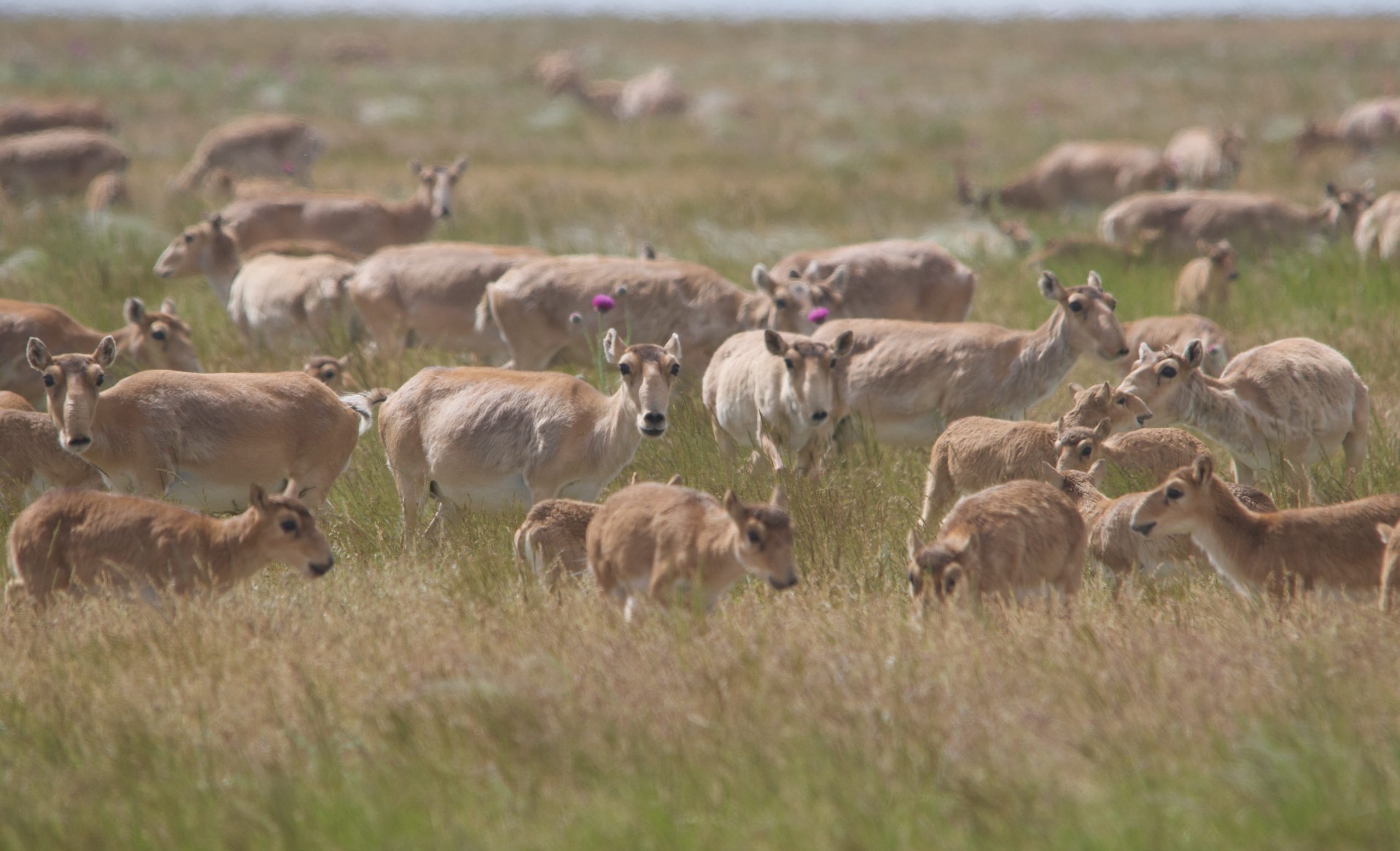
The saiga antelope is reclassified from ‘Critically Endangered’ to ‘Near Threatened’ in an “unprecedented conservation triumph”
On December 11, 2023, conservationists celebrated as the International Union for Conservation of Nature (IUCN) reclassified the saiga antelope, a keystone species of the Central Asian steppe grasslands, from ‘Critically Endangered’ to ‘Near Threatened.’
The saiga antelope population in Kazakhstan has surged from just 48,000 in 2005, to an impressive 1.9 million today. This contributed to the significant and rare status change, where ‘Critically Endangered’ is just one step below being declared extinct, while ‘Near Threatened’ is just one step above ‘Least Concern’ in the IUCN ratings.
The saiga antelope are unique for their large downward facing nostrils that both cool the extremely hot summer air and warm the freezing winter air. Dating back to the last Ice Age and outliving extinct species like woolly mammoths and sabre-toothed tigers, they are crucial to the ecosystem. Their selective grazing influences vegetation structures, distributes nutrients, and supports biodiversity across Kazakhstan’s sprawling steppe landscapes, which are a globally important carbon store.
SRT grantee partner The Association for the Conservation of Biodiversity of Kazakhstan (ACBK), along with other NGOs in the Altyn Dala Conservation Initiative, and the Saiga Conservation Alliance, as well as the Kazakh government, have collaborated in their conservation efforts over nearly two decades to achieve this triumph. The Kazakh government’s commitment to species recovery involved investment in anti-poaching initiatives, stringent law enforcement, and the establishment of major State Protected Areas covering over five million hectares. The wider partnerships of civil society organisations have also focussed on population monitoring and working with locals to raise awareness of the issues facing saigas and to form community-led ranger teams.
Despite this achievement, ongoing poaching, illegal trade, disease, climate change, and infrastructure development all remain a threat. The new ‘Near Threatened’ category reflects the potential for the species’ status to deteriorate without ongoing conservation action, and support is needed of the smaller populations in Mongolia, the Russian Federation, and Uzbekistan.
Vera Voronova, Executive Director of ACBK, talking on behalf of the Altyn Dala Conservation Initiative, noted that: “As one of the most successful recoveries of a terrestrial mammal ever recorded, this is a significant milestone for the saiga antelope conservation community and illustrates how conservation can be effective if all parties collaborate with a strong mission and appropriate resourcing. We need to ensure that conservation action scales up across Kazakhstan and neighbouring countries more broadly, to ensure the long-term recovery of saiga antelope in all range states.”
The overall success of this work was also recognised when ACBK’s Albert Salemgareyev was awarded the prestigious Whitley Award in April 2023. Salemgareyev is a biologist and a specialist in Geographic Information System and wildlife monitoring and was honoured for his work to conserve the saiga antelope. His research contributed to the creation of the five million hectares of protected land across Kazakhstan. His projects are shifting emphasis to also focus on addressing the emerging conflict between saiga and pastoralists amid a scarcity of water.
The IUCN Red List of Threatened Species is the authoritative global list of the conservation status of the world’s species, which is used globally to support conservation efforts, including as a headline indicator of progress in conservation action for the Convention on Biological Diversity.
Return to grantee stories
